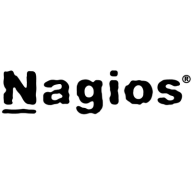

In the monitoring solutions category, BMC TrueSight and Nagios XI compete as comprehensive platforms. TrueSight leads in event management and integration, while Nagios XI is preferred for its flexibility and community support.
Features: BMC TrueSight provides robust event management, seamless integration, and comprehensive application and infrastructure health views. It supports capacity optimization and flexible monitoring of diverse assets. Nagios XI is valued for its extensive plugin support, configurability, and ease of use, enabling users to customize monitoring systems and write their own plugins.
Room for Improvement: TrueSight needs to address the size and complexity of its installation process and improve cloud monitoring stability. It also requires enhancements in high-availability capabilities and integrations. Nagios XI could improve its user interface, ease of setup, and integration with incident management systems. The complexity between Core and XI and clustering capabilities also need enhancement.
Ease of Deployment and Customer Service: Both platforms support on-premises deployments, but TrueSight offers varied cloud deployment options. Its deployment complexity is higher, reflecting its enterprise focus. BMC's customer service is generally good, with Premier Support appreciated. Nagios XI benefits from a large community but may lack professional support for complex issues.
Pricing and ROI: BMC TrueSight's enterprise focus results in a higher cost, suitable for large-scale operations, with pricing based on endpoints. It highlights operational cost reductions and improved monitoring efficiency as ROI factors. Nagios XI offers a cost-effective alternative, especially with its open-source version, providing value for smaller operations. Licensing fees are generally lower, making it a better fit for basic functionality and scalability without high costs.
If the user interface isn’t presenting data well, it becomes difficult to manage when scaling.
It is very stable.
Many tools have poor user interfaces, making them hard to manage and navigate.
The GUI could be improved. It's a bit too basic.
We are using the free, open-source version.
The pricing for the Nagios XI product is good and better than other solutions.
Nagios XI simplifies our setup and reduces the time spent configuring monitoring tools.
The alerting system is very effective.
| Product | Market Share (%) |
|---|---|
| Nagios XI | 3.5% |
| BMC TrueSight | 1.0% |
| Other | 95.5% |


| Company Size | Count |
|---|---|
| Small Business | 23 |
| Midsize Enterprise | 6 |
| Large Enterprise | 24 |
| Company Size | Count |
|---|---|
| Small Business | 22 |
| Midsize Enterprise | 17 |
| Large Enterprise | 21 |
BMC TrueSight offers extensive event management and seamless integration, providing comprehensive monitoring across varied infrastructures through its centralized console and Knowledge Modules.
BMC TrueSight delivers robust event management capabilities with seamless integration and comprehensive monitoring of diverse infrastructures. Its single console simplifies management, offering automated triage for standardized alerts, enhancing efficiency. Knowledge Modules support services from hardware to cloud, while proactive monitoring and capacity optimization enhance customization. It efficiently supports mixed environments by providing detailed insights and intelligently routing alerts to reduce noise. While improvements are needed in deployment, integration, AI, automation, reporting, and complexity reduction, it still meets diverse operational needs effectively.
What are BMC TrueSight's key features?
What benefits and ROI should users seek in BMC TrueSight?
BMC TrueSight is widely used in performance and availability monitoring for infrastructure and applications, supporting the monitoring of servers, databases, networks, and IT environments. It is implemented to improve management and reduce downtime, serving needs in data centers and cloud services. Organizations leverage it for event management, comprehensive data center monitoring, and cloud services, using its capabilities for alerting, ticket creation, troubleshooting, and compliance, enhancing operational efficiency globally.
Nagios XI provides monitoring of all mission-critical infrastructure components, including applications, services, operating systems, network protocols, systems metrics, and network infrastructure. Third-party add-ons provide tools for monitoring virtually all in-house and external applications, services, and systems.
Nagios XI uses a powerful Core 4 monitoring engine that provides users with the highest levels of server monitoring performance. This high degree of performance enables nearly limitless scalability and monitoring powers.
With Nagios XI, stakeholders can check up on their infrastructure status using the role-based web interface. Sophisticated dashboards enable access to monitoring information and third-party data. Administrators can easily set up permissions so users can only access the infrastructure they are authorized to view.
Nagios XI Benefits and Features
Some of the benefits and top features of using Nagios XI include:
Reviews from Real Users
Nagios XI stands out among its competitors for a number of reasons. Several major ones are its integration options and monitoring abilities, as well as its alerting features.
David P., a senior DevOps engineer at EML Payments Ltd, writes, “We use Nagios as a network discovery tool. We use Nagios to maintain our uptime statistics and to monitor our services. It has allowed us to be much more sophisticated in our monitoring and alerting.”
An IT-OSS manager at a comms service provider notes, “Nagios XI has a custom API feature, and we can expose custom APIs for our integration. This is a great feature.”
We monitor all IT Infrastructure Monitoring reviews to prevent fraudulent reviews and keep review quality high. We do not post reviews by company employees or direct competitors. We validate each review for authenticity via cross-reference with LinkedIn, and personal follow-up with the reviewer when necessary.